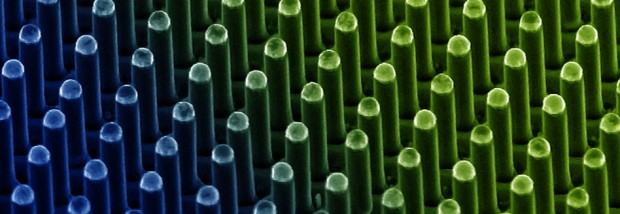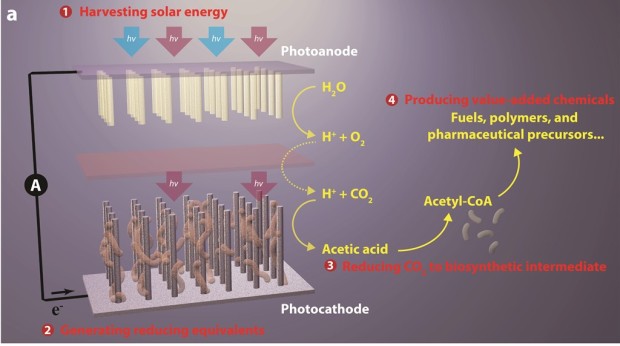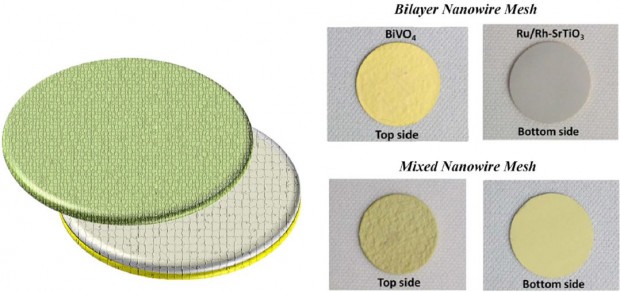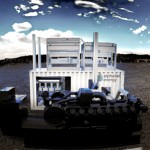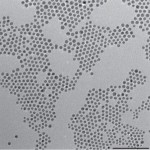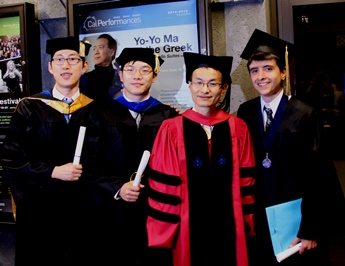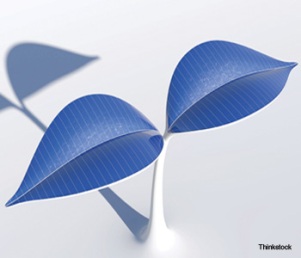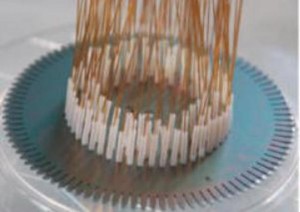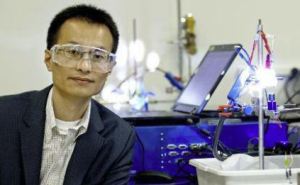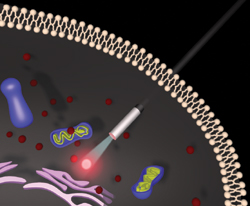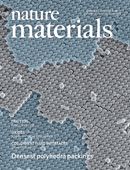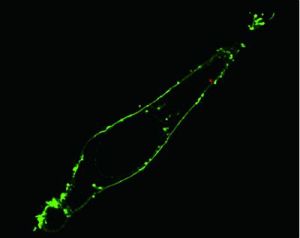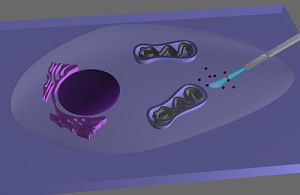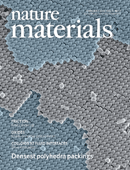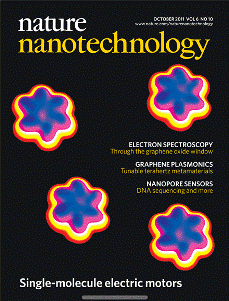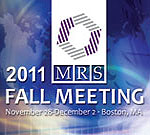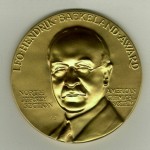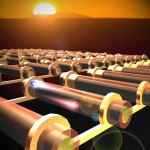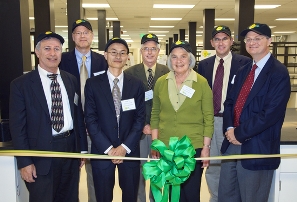Dec 2017
Nigel has been named as 2018 Enrico Fermi Fellow at Argonne. Congratulations!
“Cyborg Bacteria: Catching Light“, Kelsey’s work reported by Harvard Science Review.
“A New Direction towards Carbon Management“, an interview of Dohyung by Chemical Today Magazine.
Nov 2017
Dohyung won the Gareth Thomas graduate student award. Congratulations!
Oct 2017
Chong is named SN 10 for 2017 – ten early- and mid-career scientists who stand out to mentors and peers as people who will make a difference – presented by Science News. Congratulations!
Sept 2017
Dohyung’s paper in PNAS is reported by LBNL News Center: “Copper Catalyst Yields High Efficiency CO2-to-Fuels Conversion — Berkeley Lab scientists discover critical role of nanoparticle transformation“.
This work has also been reported in C&EN: “Copper nanoparticles could help recycle CO2 into fuel — New catalyst converts carbon dioxide to two- and three-carbon compounds“.
Mike’s work on syngas electrosynthesis in JACS is reported by LBNL News Center: “Scientists Fine-Tune System to Create ‘Syngas’ from CO2“.
Aug 2017
Kelsey’s work presented at the American Chemical Society meeting in Washington has been reported by BBC News: “Cyborg bacteria deliver green fuel source from sunlight“.
This work has also been reported by Berkeley News: “Cyborg bacteria turn sunlight into useful chemicals” and also released by ACS: “Cyborg bacteria outperform plants when turning sunlight into useful compounds“.
Woochul’s work on “ultralow thermal conductivity in all-inorganic halide perovskites” has been highlighted in LBNL News Center, titled “A Semiconductor That Can Beat the Heat“.
A newly discovered collective rattling effect in a type of crystalline semiconductor blocks most heat transfer while preserving high electrical conductivity – a rare pairing that scientists say could reduce heat buildup in electronic devices and turbine engines, among other possible applications.
Jun 2017
Letian, Minliang and Chris’ work has been highlighted in LBNL online News Center, titled New Class of ‘Soft’ Semiconductors Could Transform HD Displays. “Scientists at the Department of Energy’s Lawrence Berkeley National Laboratory (Berkeley Lab) have shown that a class of semiconductor called halide perovskites is capable of emitting multiple, bright colors from a single nanowire at resolutions as small as 500 nanometers.”
Woochul will join University of Hawaii at Manoa as an assistant professor. Congratulations!
May 2017
Peidong gave a talk on Cal Future Forum sharing the solutions for a sustainable future where he gave the audience a glimpse into the potential of artificial photosynthesis, a way to create renewable energy that doesn’t cause a net release of carbon dioxide into the atmosphere. The technology, he said, can transform carbon dioxide and water into chemical fuels using sunlight.
Congratulations to Dandan (Ph.D), Fan (Ph.D), Cindy (B.S.), Nigel (Ph.D) and Yude (Ph.D) on graduating!
Dr. Letian Dou will join the department of Chemical Engineering, Purdue University as an assistant professor. Congratulations!
April 2017
Nigel and Yude have won the MRS Graduate Student Awards, congratulations!
New Scientists reported our photosynthetic cyborg cell research as a cover story. Make like a leaf: How copying photosynthesis can change society
Chong Liu (Ph. D. Chemistry 2015) joins Department of Chemistry, UCLA, as an assistant professor. Congratulations!
March 2017
Rong Fan (Ph. D. Chemistry 2006) has received tenure at Department of Biomedical Engineering, Yale University! Congratulations!
NASA Selects First-Ever Space Technology Research Institute. As part of the Berkeley CUBES program, we will continue to develop our artificial photosynthesis program to produce chemical fuels, fertilizers, and pharmaceuticals from CO2, H2O, N2 and sunlight!
Dr. Jongwoo Lim joins Department of Chemistry, Seoul National University as an assistant professor. Congratulations!
Dandan and Yude won the Chinese Oversea Outstanding Graduate Student Award. Congratulations!
January 2017
Our lab has won a UC Berkeley Excellence in Laboratory Safety Award in the “Large Chemical Sciences Lab” category! Congratulations!

December 2016
Dr. Yi Yu joins Shanghai Tech University as an assistant professor! Congratulations!
November 2016
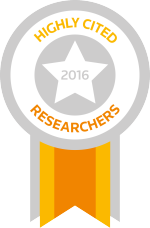 Peidong retains his status as a Thomson Reuters “Highly Cited Researcher” for the year of 2016. In addition, he has been shortlisted as a Finalist for the 2016 World Technology Awards!
Peidong retains his status as a Thomson Reuters “Highly Cited Researcher” for the year of 2016. In addition, he has been shortlisted as a Finalist for the 2016 World Technology Awards!

Our work on artificial photosynthesis is featured, among other groups, in C&EN’s recent cover story, Will the Artificial Leaf Sprout to Combat Climate Change?
Zhiqiang and Nigel’s recent paper is featured by Nature Energy, in Electrocatalysis: Understanding Platinum Migration. Excerpt: “This work is an elegant illustration of the degree of control that synthetic chemists can now achieve when making the next generation of electrocatalytic nanocrystals.”
October 2016
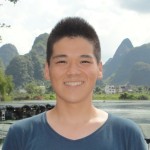
Recent graduate Kelsey Sakimoto receives the Kavli Best Student Thesis 2015-16 Award! Congratulations, Kelsey!
Invited by President Obama’s office, Peidong will join the White House Frontier Conference, discussing artificial photosynthesis in the Global Frontier track.
September 2016
Our group’s photosynthetic hybrid semiconductor-bacteria systems are featured by the Future of Life Institute article, “Artificial Photosynthesis: Can We Harness the Energy of the Sun As Well As Plants?” Excerpt: “Peidong Yang has already created a system of artificial photosynthesis that out-produces nature. If he continues to increase the efficiency and durability of his PBS, artificial photosynthesis could revolutionize our energy use and serve as a sustainable model for generations to come.”
Kelsey’s work on self-photosensitized photosynthetic bacteria for artificial photosynthesis is featured on the microbiology podcast BacterioFiles.
August 2016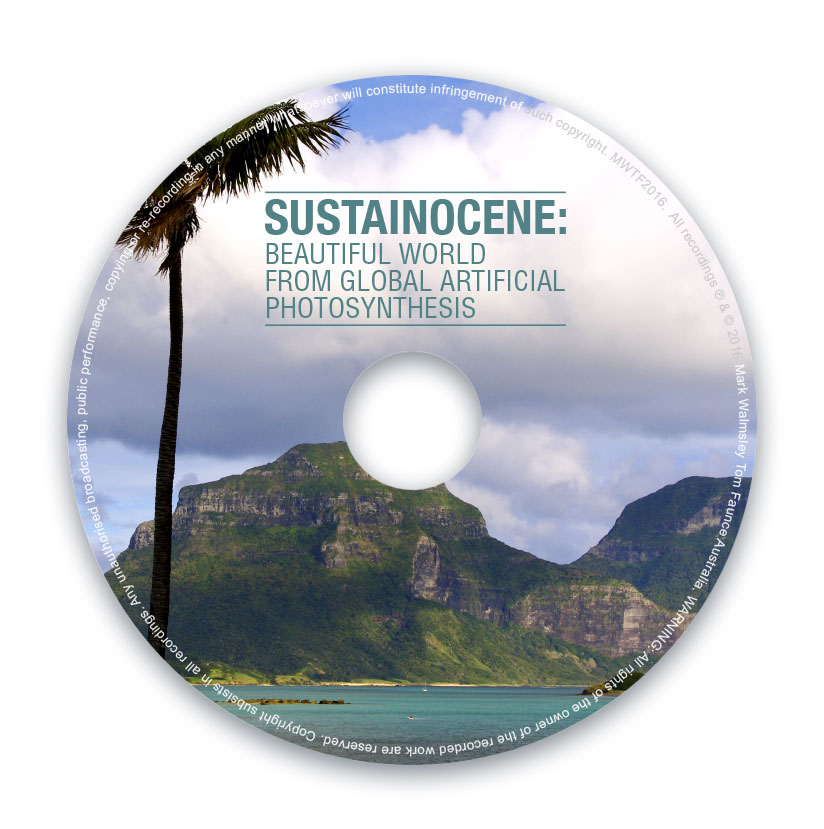
The Global Artificial Photosynthesis Project (Brainchild of Prof. Tom Faunce at Australia National University and several scientists including Peidong) produces its first music CD album: Sustainocene: Beautiful World From Global Artificial Photosynthesis, with a short excerpt from Peidong’s talk a couple of years ago.
Sample songs:
Split by Sun – Mark Walmsley, Tom Faunce
Corporatocene – Mark Walmsley, Tom Faunce (ft. Peidong Yang)
Nick is awarded the Royal Society Newton International Fellowship! 
June 2016
Sustainable Nano features Kelsey’s work on self-photosensitized bacteria: Bacteria in the Shell: A Nano-bio Hybrid for Solar Energy Capture.
Sam’s review, “Semiconductor Nanowire Lasers,” makes the cover of Nature Reviews Materials.
May 2016
Congratulations to Nick, Andrew, Kelsey, Arky, and Stephanie on graduating!
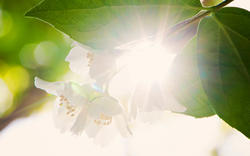
Our group’s research on artificial photosynthesis is featured in an essay in Aeon: Sunshine in a Bottle.
Peidong is elected to the National Academy of Sciences!
April 2016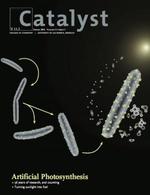
Our group’s bacterial-inorganic hybrid catalysts for artificial photosynthesis make the cover of UC Berkeley’s Catalyst, Vol. 11 Issue 1.
Kelsey’s Science paper is featured by the MRS Bulletin: Bio Focus: Hybrid semiconductor-bacterium self-photosensitization improves artificial photosynthesis
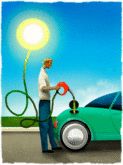
Our group’s work on artificial photosynthesis is highlighted in a PNAS News Feature: Liquid Sunlight.
Former undergraduate member Yuxi Tian is a recipient of the Paul and Daisy Soros Fellowship for New Americans, supporting his graduate work towards biomathematics and statistics at UCLA.
March 2016
Kelsey wins 2016 Berkeley Grad Slam Competition.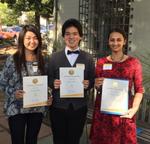
Grad Slam is a UC-sponsored competitive speaking event designed to showcase and select the best research presentations given by UC graduate students in three-minute “TED-like” talks pitched to a general audience. He will go on the the UC-wide final competition on April 22.
February 2016
Lasers Rewired: Scientists Find a New Way to Make Nanowire Lasers

Sam’s PNAS paper highlighted by LBNL News: “Scientists at the U.S. Department of Energy’s Lawrence Berkeley National Laboratory (Berkeley Lab) and UC Berkeley have found a simple new way to produce nanoscale wires that can serve as tiny, tunable lasers.”
Copper Nanowires Make Good Transparent Conductors
 Letian and Fan’s ACS Nano paper highlighted by nanotechweb.org. “Researchers at the University of California at Berkeley and the Lawrence Berkeley National Laboratory have developed a new solution-based, cost-effective way to wrap reduced graphene oxide around the surface of ultrathin transparent conducting copper nanowires. The technique significantly improves the stability of the wires in air and reduces the amount of light scattered by the materials. Thin films made of the wires might be used in optoelectronics devices, particularly in displays and flexible electronics.”
Letian and Fan’s ACS Nano paper highlighted by nanotechweb.org. “Researchers at the University of California at Berkeley and the Lawrence Berkeley National Laboratory have developed a new solution-based, cost-effective way to wrap reduced graphene oxide around the surface of ultrathin transparent conducting copper nanowires. The technique significantly improves the stability of the wires in air and reduces the amount of light scattered by the materials. Thin films made of the wires might be used in optoelectronics devices, particularly in displays and flexible electronics.”
January 2016
Kelsey’s Science paper highlighted by LBNL News. “Berkeley Lab researchers are using M. thermoacetica to perform photosynthesis – despite being non-photosynthetic – and also to synthesize semiconductor nanoparticles in a hybrid artificial photosynthesis system for converting sunlight into valuable chemical products.”
December 2015
MIT Technology Review highlighted Nanowire-Bacteria work. “A nanomaterials chemist has figured out a good way to mimic leaves and turn water and carbon dioxide into things we need.”
Nanowire dye sensitized solar cell work highlighted by C&EN news as the most cited chemistry paper of 2005.
November 2015
Nanowire/bacteria work highlighted by Science Perspective.
Organic–inorganic perovskites: Now in two dimensions
Letian’s, Yi’s, and Andrew’s Science paper highlighted by Nature Nanotechnology.
Peidong’s Science proposal with the Unified Microbiome Initiative highlighted by LBNL News.
“Deciphering how microbes interact with each other, their hosts, and their environment could transform our understanding of the planet. It could also lead to new antibiotics, ways to fight obesity, drought-resistant crops, or next-gen biofuels, to name a few possibilities.”
September 2015
Chemist Peidong Yang Receives MacArthur ‘Genius’ Award
Peidong named one of the 24 2015 MacArthur Fellows. Fellows receive $625,000 unrestricted funds to use as they wish.
A Different Type of 2D Semiconductor
Letian, Andrew, and Yi’s paper highlighted by LBNL News: “Researchers at the U.S. Department of Energy (DOE)’s Lawrence Berkeley National Laboratory (Berkeley Lab) have successfully grown atomically thin 2D sheets of organic-inorganic hybrid perovskites from solution. The ultrathin sheets are of high quality, large in area, and square-shaped. They also exhibited efficient photoluminescence, color-tunability, and a unique structural relaxation not found in covalent semiconductor sheets.”
Fueling up: How nanoscience is creating a new type of solar power
and
‘Synthetic Leaves’: The Energy Plants of the Future?
Peidong, along with Thomas Moore and Ted Sargent, was interviewed by the Kavli Foundation and livescience on bacteria-nanowire work. “By marrying nanoscience and biology, Yang and his colleagues created a biologically inspired, but completely artificial, system that converts the sun’s rays into fuel and chemicals. The system uses long, nanoscale filaments to turn sunlight into electrons, which bacteria use to convert carbon dioxide and water into butanol fuel and more complex molecules such as acetate, a chemical building block, and amorphadiene, which is used to make antimalarial drugs.”
August 2015
Another Milestone in Artificial Photosynthesis
Joint project with Prof. Chris Chang and Prof. Michelle Chang “…has now developed a hybrid system that produces renewable molecular hydrogen and uses it to synthesize carbon dioxide into methane, the primary constituent of natural gas.”
July 2015
Artificial Photosynthesis Work Covered by KQED Science Radio Show (NPR)
Peidong wins 2015 ACS Nano Lectureship Award
“…[to] honor the contributions of scientists whose work has significantly impacted the fields of nanoscience and nanotechnology. Three award recipients from around the globe will be honored in 2015, with one awardee each from the Americas, Europe/Middle East/Africa, and Asia/Pacific…..The 2015 awards will be presented at the ChinaNano 2015 meeting in Beijing, China, where each recipient will give an invited talk.”
Peidong wins 2015 Nano Today Award
“…for his pioneering work on nanowire synthesis and energy applications. The award will be presented to Professor Yang during the 4th Nano Today Conference in Dubai, where he will also give a plenary lecture.”
May 2015
Berkeley Lab Science Well-Represented in 2015 Lawrence Award Announcements
Peidong “named by U.S. Energy Secretary Ernest Moniz as recipients of the 2015 Ernest Orlando Lawrence Award, the Department of Energy (DOE)’s highest scientific honor…”
How Nanomaterials Can Help Make Fuel from Sunlight
Chong’s paper highlighted by MIT Technology Review
April 2015
Artificial Photosynthesis Device Paves Way Toward Sustainable Liquid Fuel
Chong’s paper highlighted by Chemical & Engineering News
Artificial Photosynthesis Advance Hailed As Major Breakthrough
Chong’s paper highlighted by The Huffington Post.
Major Advance in Artificial Photosynthesis Poses Win/Win for the Environment
Chong’s paper highlighted by LBNL News.
“A potentially game-changing breakthrough in artificial photosynthesis has been achieved with the development of a system that can capture carbon dioxide emissions before they are vented into the atmosphere and then, powered by solar energy, convert that carbon dioxide into valuable chemical products, including biodegradable plastics, pharmaceutical drugs and even liquid fuels….By combining biocompatible light-capturing nanowire arrays with select bacterial populations, the new artificial photosynthesis system offers a win/win situation for the environment: solar-powered green chemistry using sequestered carbon dioxide.”
March 2015
Reverse Cycle: Inspired by Leaves, a New Invention Turns Sunlight and Water into Fuel
Bin’s paper highlighted by Cal Alumni Association Magazine.
January 2015
Sunlight Produces Hydrogen via ‘Artificial Leaf’
Bin’s paper highlighted by Photonics.com:
” A flat mesh of light-absorbing semiconductor nanowires can split water molecules, producing hydrogen gas that could be used for fuel….The mesh works without any electron mediators. The researchers said that large-scale networks of the mesh could be made using low-cost solution synthesis and vacuum filtration techniques. The hydrogen created by these mesh networks could fuel vehicles and power homes and businesses in an environmentally friendly way.”
October 2014
Alphabet Energy Introduces the World’s Most Powerful Thermoelectric Generator
“Alphabet Energy introduced the world’s most powerful thermoelectric generator today, which captures exhaust heat and converts it into electricity.
The company’s first product, called the E1, attaches to an exhaust stack and uses Alphabet’s patented thermoelectric materials to convert waste heat into electricity. Thermoelectrics use a temperature differential to generate electricity in the solid state. This product introduction is the first for the company, which was founded in 2009 at Lawrence Berkeley National Laboratory.”
September 2014
2014 Thomson Reuters Citation Laureates
Peidong named by Thomson Reuters as the 2014 Citation Laureate in Physics “for his contributions to nanowire photonics including the creation of the first nanowire laser”.
“Peidong Yang, a chemist with Berkeley Lab’s Materials Sciences Division, led a study in which bimetallic nanoparticles of gold and copper were used as the catalystfor the carbon dioxide reduction. The results experimentally revealed for the first time the critical influence of the electronic and geometric effects in the reduction reaction.”
May 2014
Congratulations Jongwoo Lim (PhD), Chong Liu (PhD), and Petar Petrov (BS) on graduating!
Petar won the Glenn Seaborg Award for Outstanding Undergraduate Research in Chemistry, which comes with $2000. Congratulations!
Chen Chen’s work has been highlighted in the latest issue of “DWV-Mitteilungen” on page 25
April 2014
Novel nanocatalysts for fuel cells
A new shape for the catalysts of oxidation and hydrogen-evolution reactions could mean more efficient, cheaper fuel-cell stacks, and perhaps even cheaper hydrogen fuel. (Argonne National Laboratory)
Congratulations to Chong Liu for receiving the MRS Graduate Student Silver Award
March 2014
3D nanocatalysts go dodecahedron
Researchers at the Lawrence Berkeley and Argonne National Labs in the US say they have discovered a new class of 3D bimetal nanocatalysts that are much more efficient and far cheaper than the best platinum catalysts available today. The structures, made of hollow nanopolyhedra of both platinum and nickel, could be used in fuel cells and electrolyzers.
Fuel cells put in the frame with catalysts that need far less platinum
Article highlighting the work describing “an exceptional fuel cell catalyst that contains far less platinum”.
February 2014
Big Step for Next-Generation Fuel Cells and Electrolyzers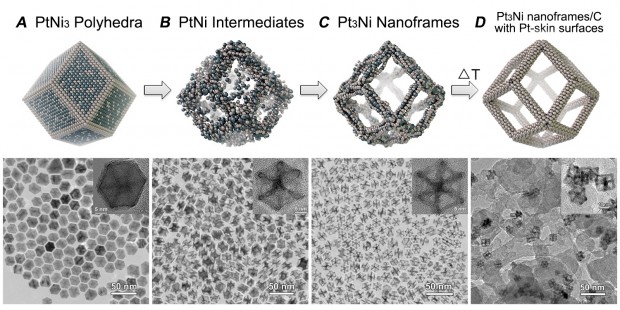
Researchers at Berkeley and Argonne National Labs Discover Highly Promising New Class of Nanocatalyst
This work has been highlighted as a Science Headliner on the DOE Office of Science website
November 2013
SILICON TREES SUNBATHE
American scientist have established an artificial, nanosize forest, in which the leaves absorb sunlight and split water into oxygen, hydrogen ions, and electrons. The end product is hydrocarbon, the cornerstone of our fuels.
May 2013
 Artificial Forest for Solar Water-Splitting
Artificial Forest for Solar Water-Splitting
Berkeley Lab Researchers Report First Fully Integrated Artificial Photosynthesis Nanosystem.
This work has been highlighted on the DOE Office of Science homepage, Washington Post, BBC Mundo, and KurzweilAI News.
April 2013
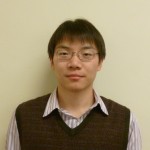
Congratulations to Jongwoo Lim and Chong Liu for receiving 2 prestigious awards! Jongwoo Lim received the MRS Graduate Student Silver Award, and Chong Liu received the 2012 Chinese Government Award for Outstanding Self-financed Students Abroad.
Congratulations to Petar Petrov for receiving an Undergraduate Research Stipend in the amount of $2000 in recognition of his strong academic record and his outstanding research accomplishments!
February 2013
Peidong is highlighted in Optics and Photonics News
Artificial Photosynthesis: Saving Solar Energy for a Rainy Day
In an effort to keep up with the world’s growing energy needs, researchers consider a production method that is billions of years old—photosynthesis. Artificial photosynthesis could provide us with a way to capture the sun’s energy and store it for later use.
October 2012 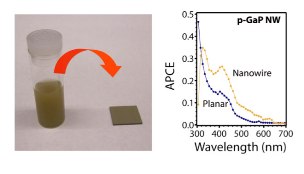
Nanotechweb.org: Zinc doping improves nanowire electrodes. Nanotechweb.org highlights Chong Liu’s recent Nano Letter paper.
September 2012
Nature Materials Focus: “Ten Broad Years”
In a special ten-year anniversary issue, prestigious journal Nature Materials included work from materials scientist Peidong Yang in a list of “landmark articles” appearing in their pages over the past decade. The article from Yang and coworkers, titled “Nanowire dye-sensitized solar cells,” has been cited over 2,000 times since it appeared in June 2005. In their article, the team of Berkeley Lab and UC Berkeley researchers introduced the idea of using nanowires in dye-sensitized solar cells to overcome trap-limited diffusion and improve efficiency.
June 2012
Berkeley Lab Wins Four 2012 R&D 100 Awards. Peidong and former lab member Hung-Ta Wang are honored along with Daojing Wang and Pan Mao for their work on the Multinozzle Emitter Array.
April 2012
- “Solare Tankstelle”: Peidong was interviewed by Der Spiegel for a story on artificial photosynthesis
- Peidong was elected to the American Academy of Arts and Sciences, an honorary society for the nation’s “thinkers and doers.”
- Congratulations to Yang lab alum Dat Hoang! Dat was awarded an NSF Graduate Fellowship in Chemistry to continue his studies at Columbia Univerisity.
February 2012
- Nature Nanotechnology
- Nanobiotechnology: Checking out the insides of cells
January 2012
Nature Methods
Nanobiotechnology: A microscopic endoscope
Optics & Photonics Focus
Spying on Living Cells
Nature Materials cover letter on high-density polyhedra packing
December 2011
LBNL News Center
A Single Cell Endoscope: Berkeley Lab Researchers Use Nanophotonics for Optical Look Inside Living Cells
ScienceDaily
Single Cell Endoscope
Nanotechweb.org
Nanowire makes single-cell endoscope
BioOptics World
Single-cell endoscope enables optical look inside living cells
November 2011
LBNL News Center
On the Road to Plasmonics With Silver Polyhedral Nanocrystals
October 2011
Nature Nanotechnology
Our group’s research was published in the first issue of Nature Nanotechnology five years ago. Peter Rodgers interviews Peidong and other authors to ask how nanotechnology has changed since then.
September 2011
Peidong is awarded the MRS Medal for outstanding contributions in the creative synthesis and assembly of semiconductor nanowires and their heterostructures, and innovations in nanowire-based photonics, thermoelectrics, solar energy conversion and nanofluidic applications.
GigaOM
Alphabet Energy turns to silicon for waste heat-to-energy
Peidong wins the Leo Hendrik Baekeland Award, given biennially to an American chemist under 40 years of age in recognition of accomplishments in pure or industrial chemistry, as characterized by the initiative, creativeness, leadership, and perseverance of the individual.
August 2011
Korea IT Times
Nanowires used for low-cost, efficient solar cells
LBNL News Center
Down to the Wire: Berkeley Lab Researchers Develop Inexpensive Technique for Making High Quality Nanowire Solar Cells
June 2011
C&E News
Thermoelectrics Make A Comeback
LBNL News Center
Joint Center for Artificial Photosynthesis-North is Now Open
May 2011
Chemical Processing
New Concept Targets Sequential Reactions
April 2011
 LBNL News Center: Berkeley Lab Researchers Report Tandem Catalysis in Nanocrystal Interfaces: Could be a Boon to Green Energy
LBNL News Center: Berkeley Lab Researchers Report Tandem Catalysis in Nanocrystal Interfaces: Could be a Boon to Green Energy
RSC News: One catalyst, two reactions
C&EN: Heterogeneous Tandem Catalysis



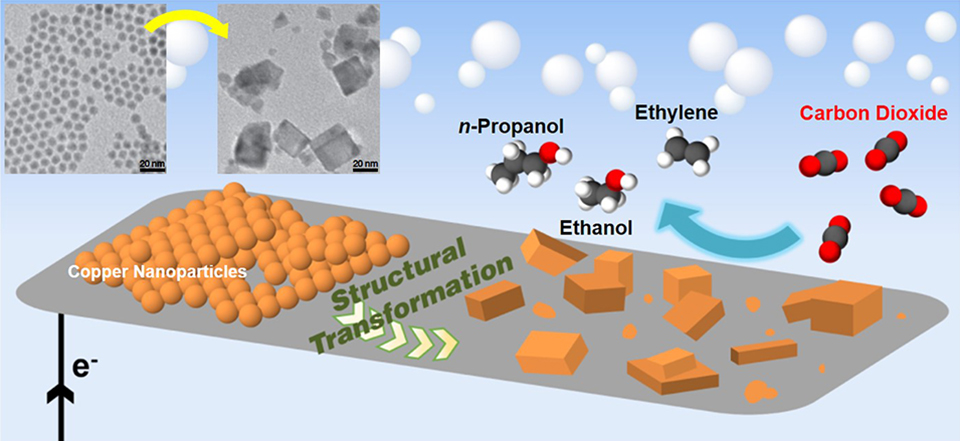
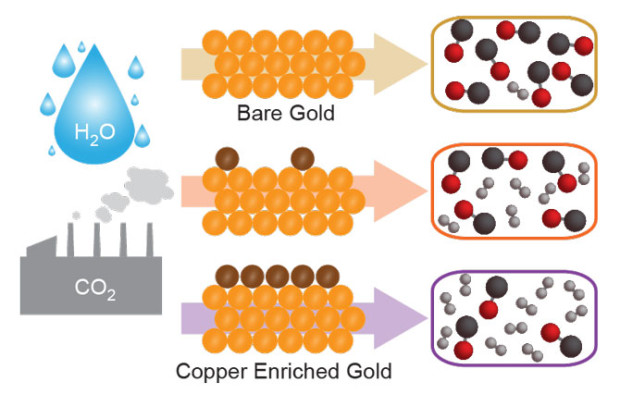
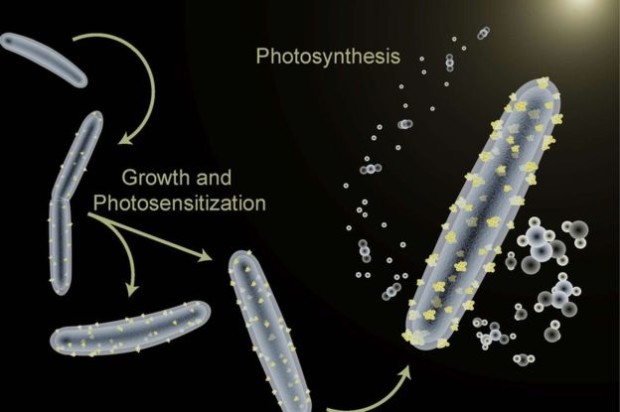
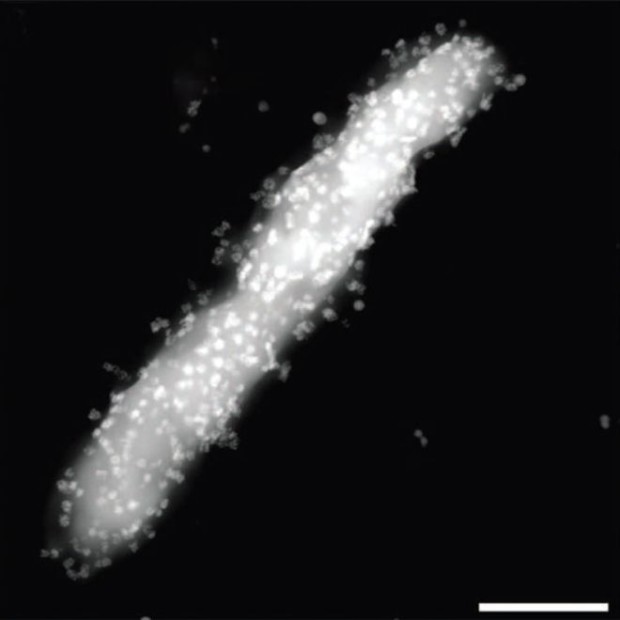
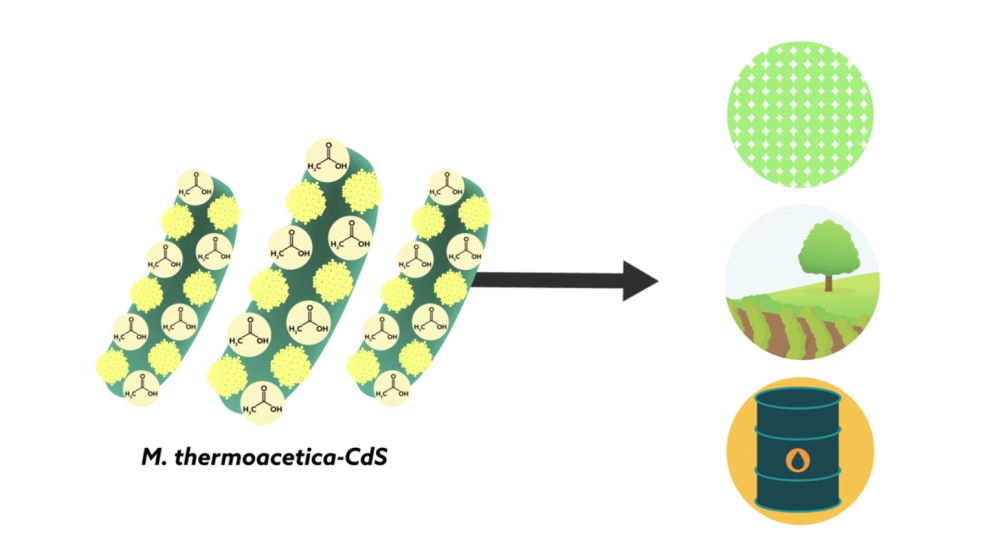

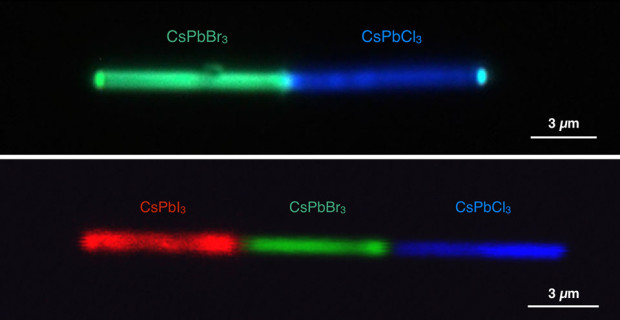


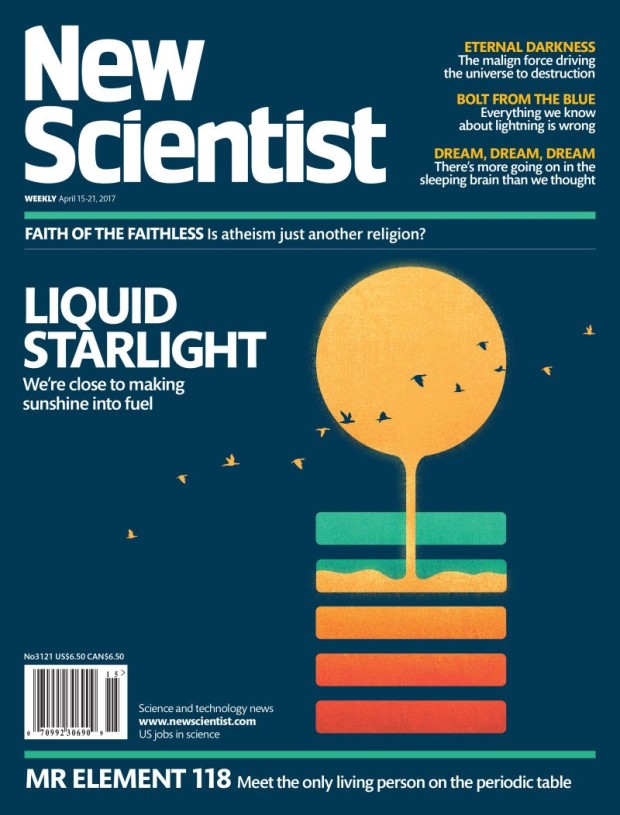
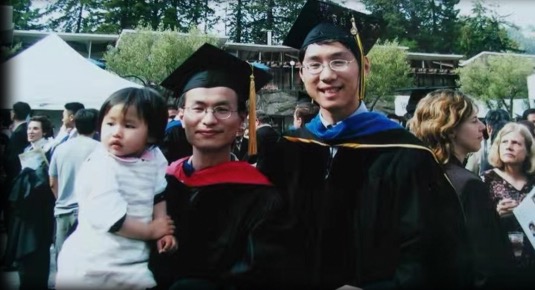
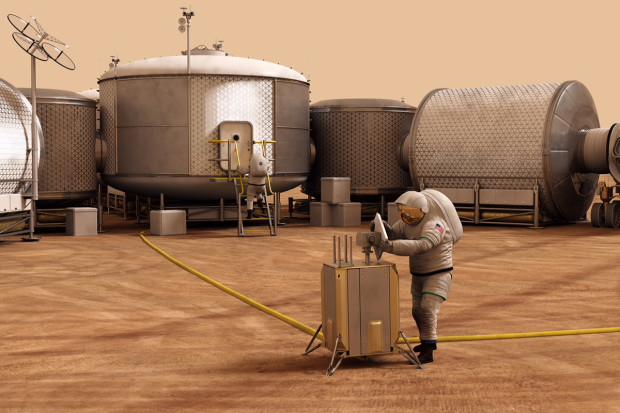

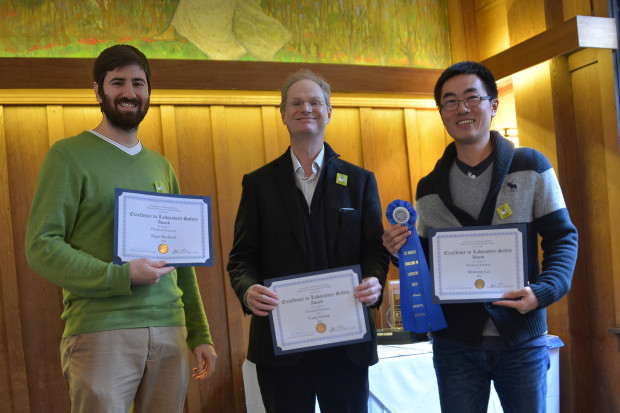
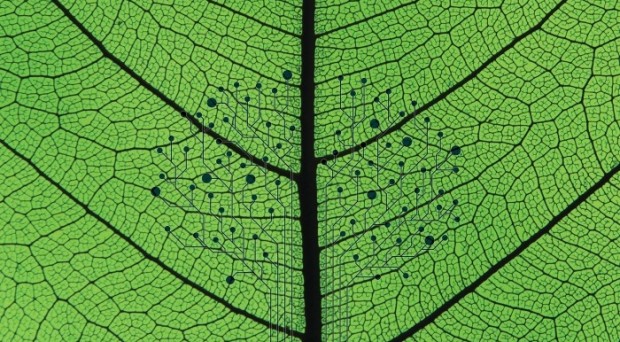


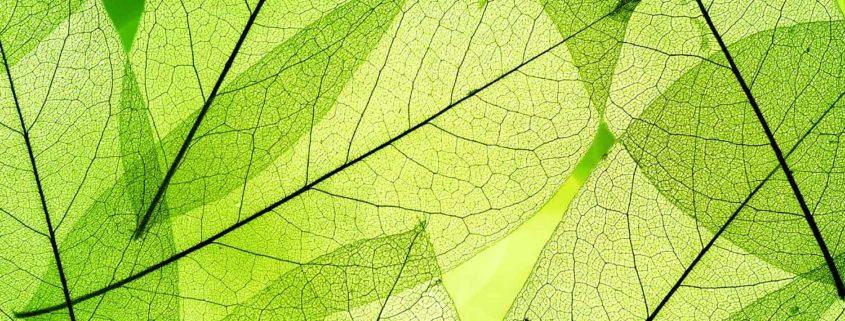
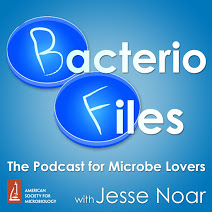
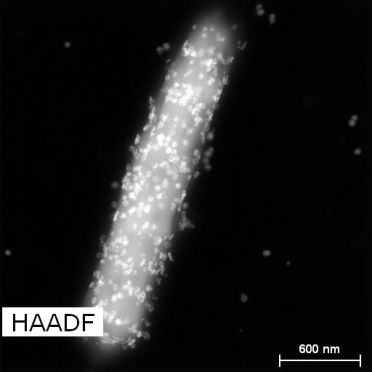
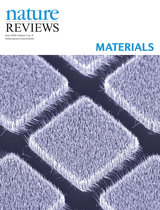
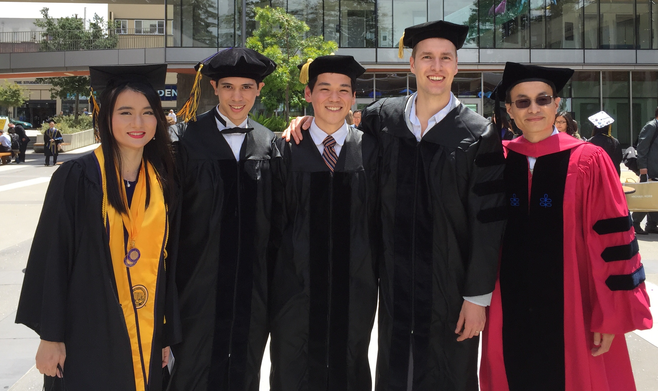
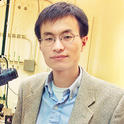
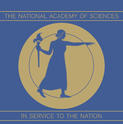
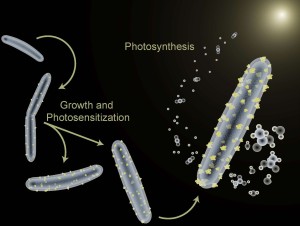 How to Train Your Bacterium
How to Train Your Bacterium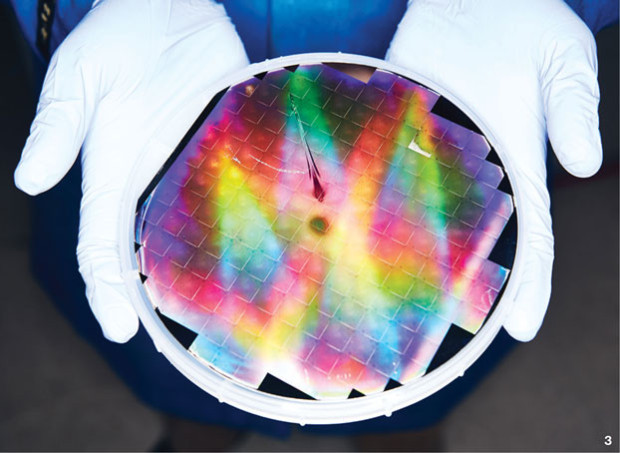 The Ideal Fuel
The Ideal Fuel